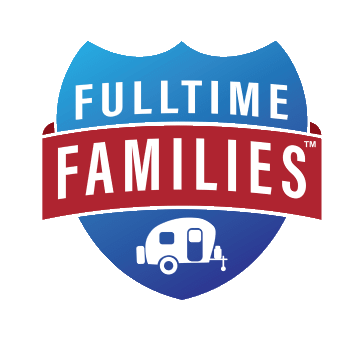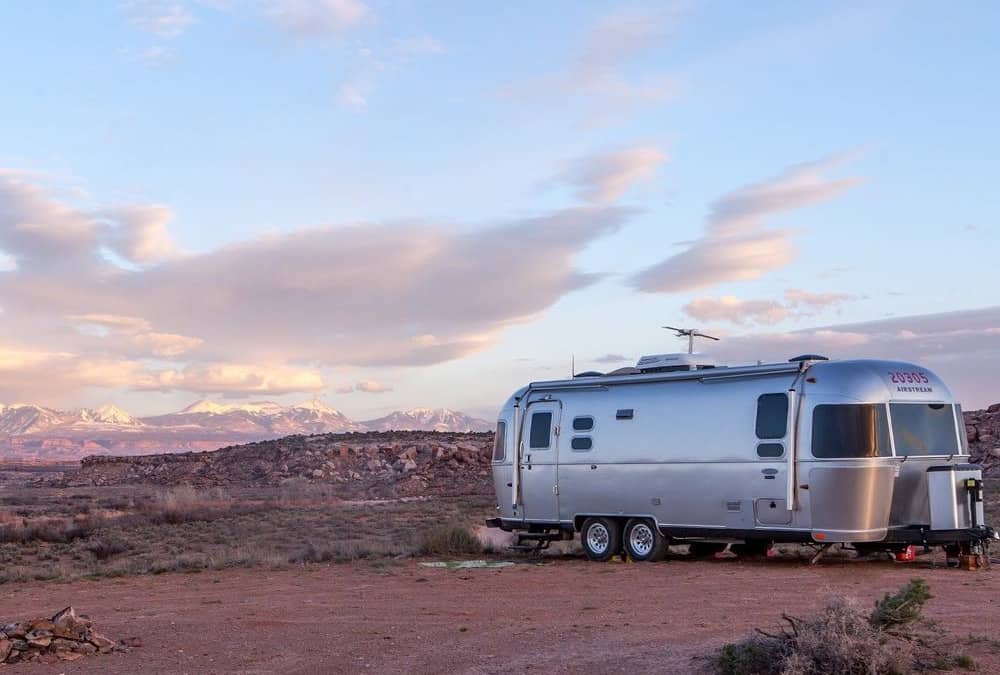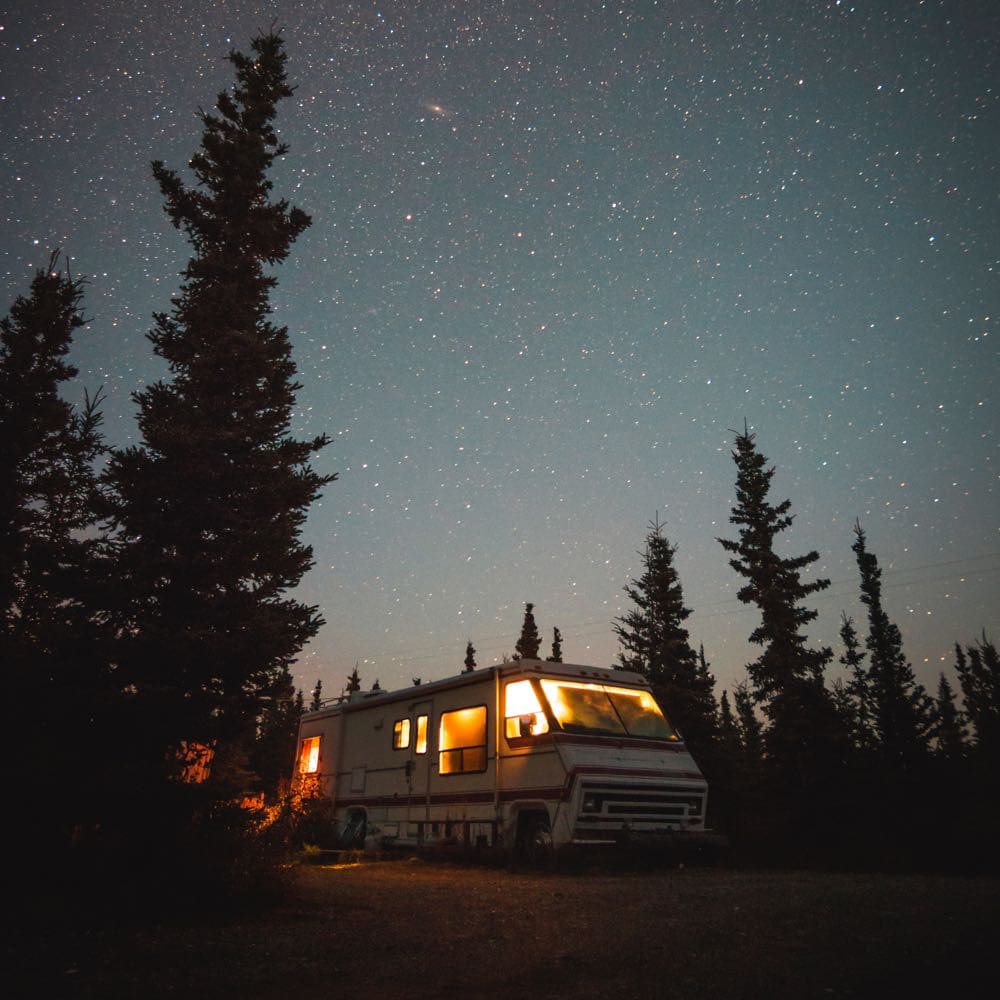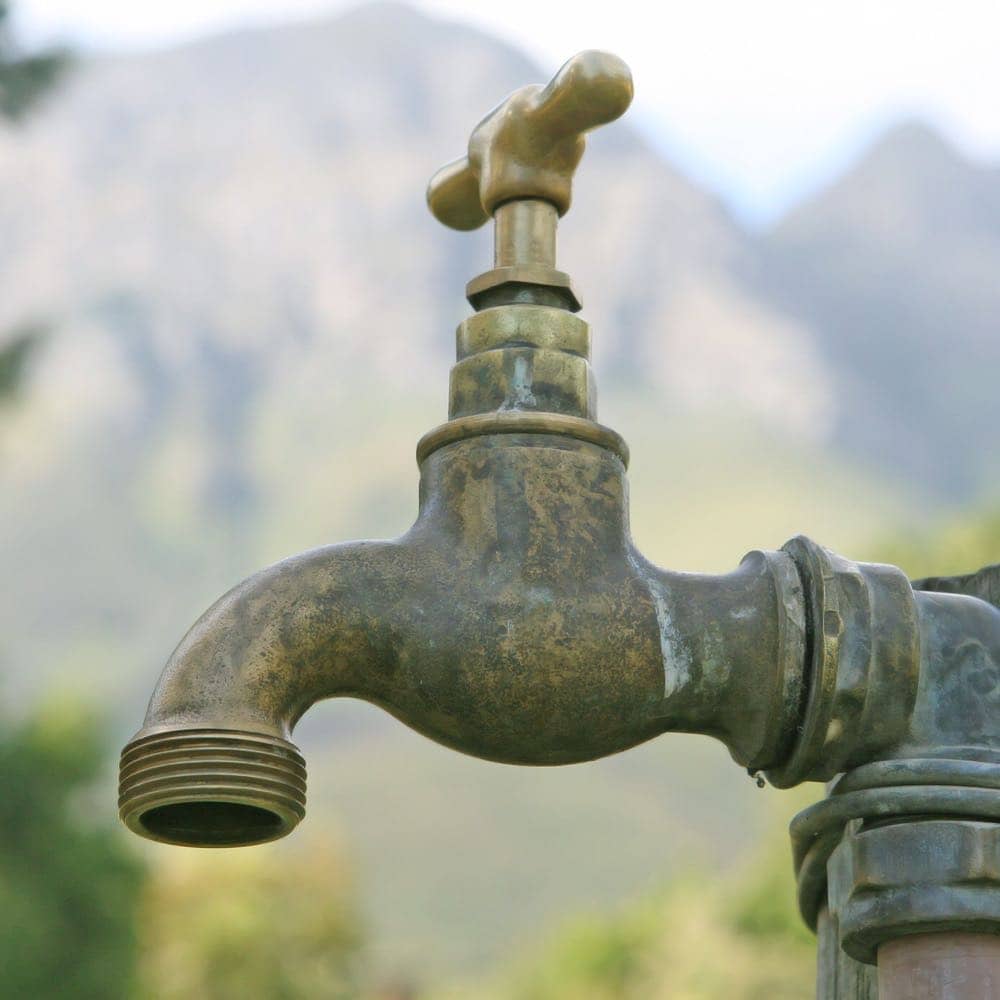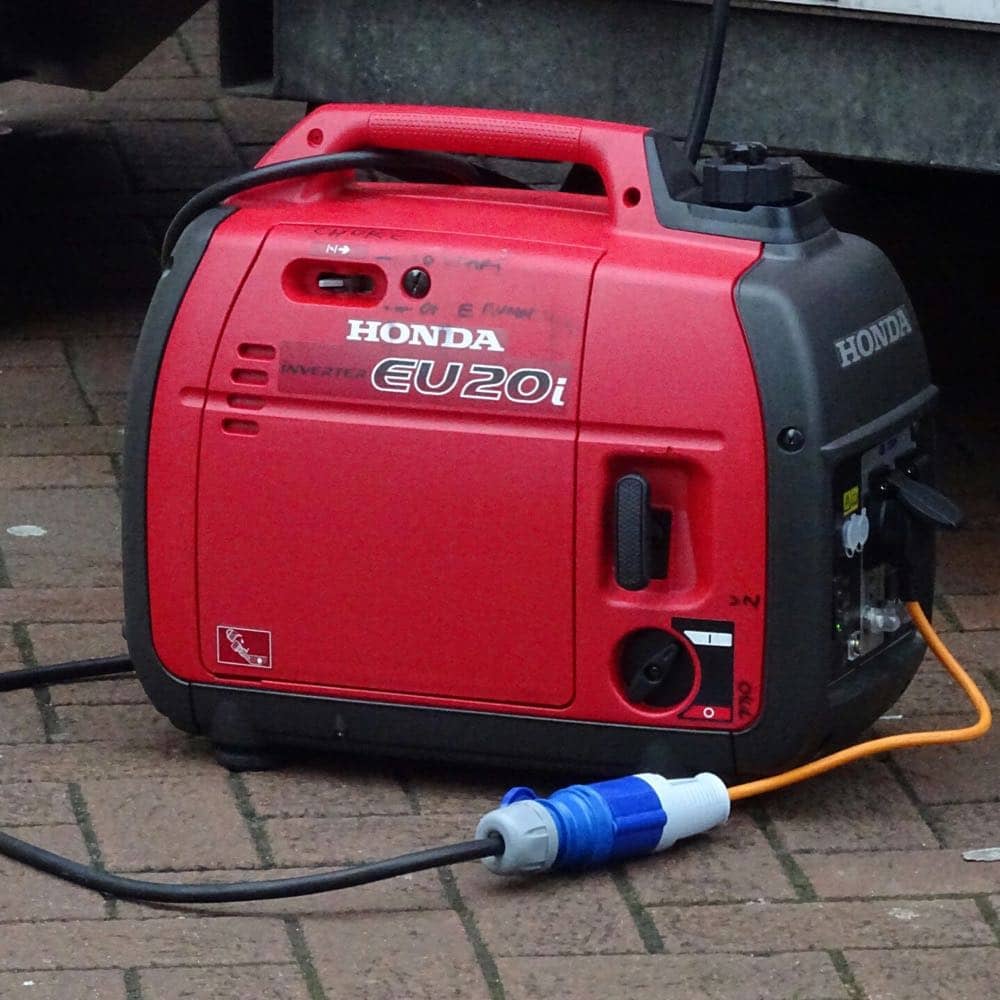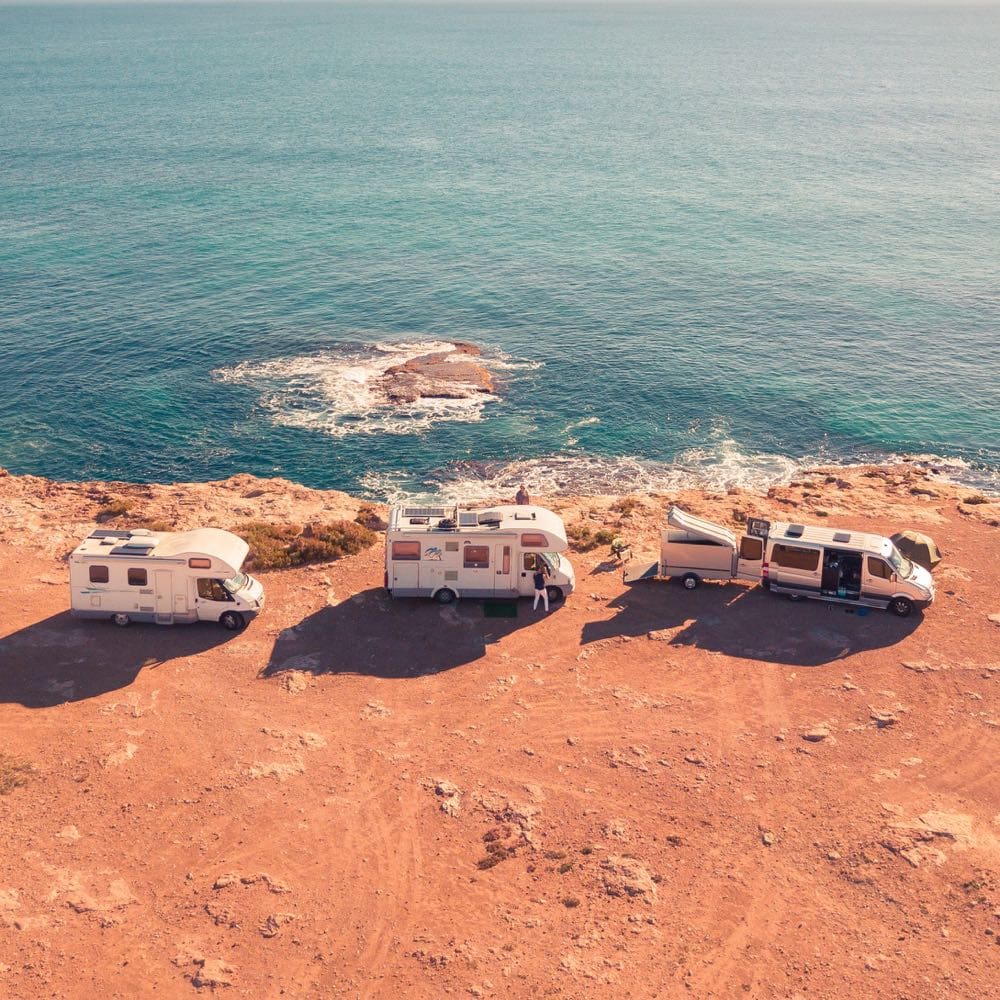This article may contain compensated links, please read our disclaimer for more information.
Ever wanted to escape from everything, head out into the wilderness, and spend some time reconnecting with nature? Well, one of the many great things about RV living is that you can do just that, anytime you like. The good thing about this kind of trip is you leaving all of the things you won’t need to just survive. Off with the phones and all the other distractions of the urban life and enjoying the evening around a small dinner using BestOfMachinery‘s portable butane burners.
Unfortunately, most RV parks and campgrounds don’t really offer the wilderness camping experience, meaning RVers have to seek out these experiences themselves. This is where boondocking comes into play.
In this article we’re going to discuss the ins and outs of boondocking so you can take full advantage of fulltime RV living by escaping into nature once in a while. I had to make sure I have packed everything I needed as we will be gone off the grid for a while. I have a bit of a trouble with my eyes so I have packed my glasses along with my acuvue contact lenses uk for the trip. I have also packed some food and water for our trip.
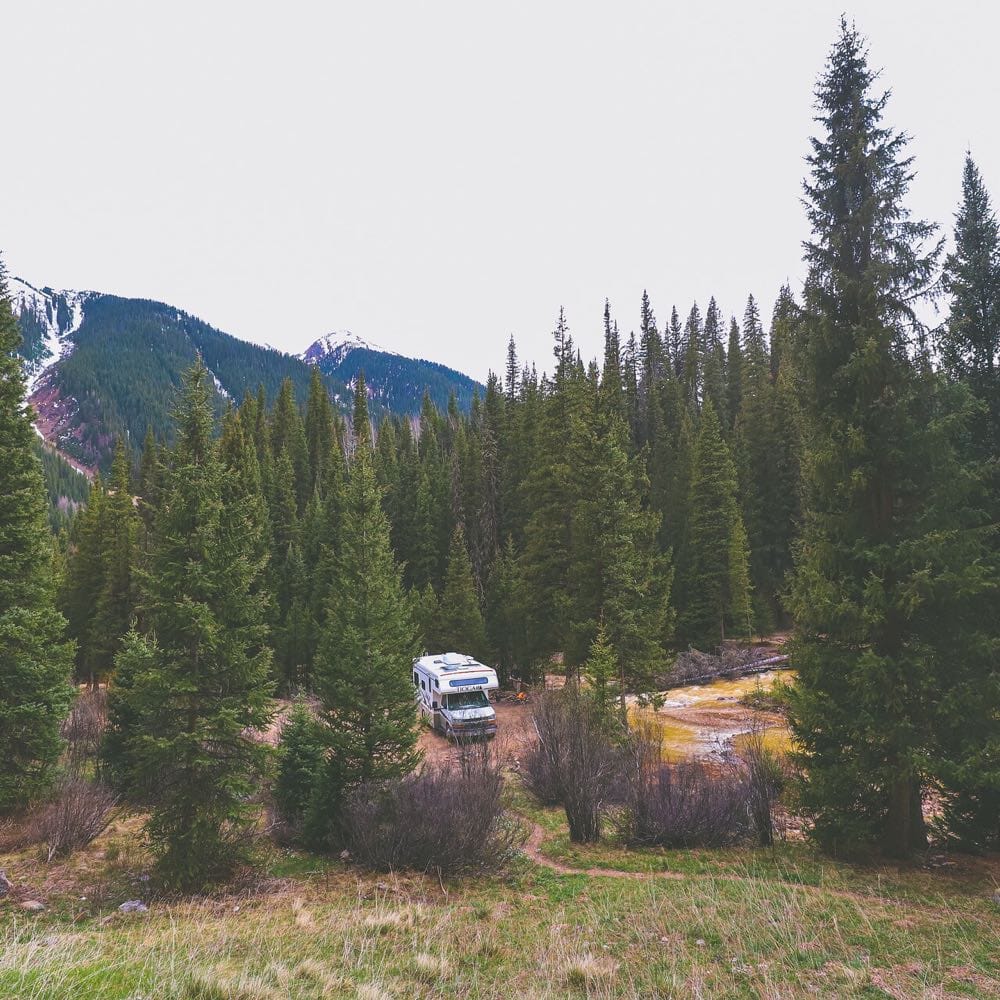
What is Boondocking?
Let’s first address the most basic of boondocking questions: What is boondocking?
For starters, it’s good to know what dry camping is. Dry camping is staying one or more nights in a place with no water, sewer, or electric hookups. This is generally free camping, but sometimes will incur a nominal fee. Dry camping could happen in a Walmart parking lot, a rest area, at truck stops, or anywhere else you can legally park overnight.
Boondocking is a type of dry camping. More specifically, the term refers to dry camping in the wilderness, a.k.a. “the boonies”. The boonies might be one of the many national forests, a desert, or even the beach, but is always completely off the grid and never in a parking lot.
Why Choose Boondocking?
Why would someone choose to camp without any hookups when there are so many RV parks out there? Well, there are actually several reasons one might make this choice. Some of the most popular reasons are listed below.
Escape Into Nature
As mentioned before, RVing offers a fabulous opportunity to escape into nature, and boondocking is the very best type of RVing to use for this sort of escape.
Camping in the middle of nowhere allows you to take a break from the cramped quarters of a campground or RV park, offering the peace and quiet of nature right outside your door. It also gives you a chance to see places many will never see, and ensures you will always have an absolutely amazing view out your window.
Save Money
Camping spots in RV parks are pricey. When you’re living in an RV fulltime, those fees add up quickly. Boondocking is a fabulous way to get a break from those high campground costs and instead save your cash for other, more fun things.
Be Self-Sufficient
Finally, many people like the idea of being completely self-sufficient. Boondocking is the perfect way to practice your self-sufficiency and prove to the world that you can take care of yourself just fine without the help of an RV park.
How to Find Boondocking Spots
The thing about boondocking is, you can’t just set up camp anywhere. There are certain places where dry camping is perfectly legal, but if you camp elsewhere, you’re liable to get yourself into trouble.
Fortunately, finding those legal boondocking spots isn’t too terribly difficult. The Bureau of Land Management (BLM), The National Forest Service, and the Fish and Wildlife Service all own plots of land that are full of great camping spots—a far cry from the truck stops many RVers might find themselves dry camping in. These are the first places you’ll want to look to find free camping.
All that said, even knowing that these public lands are full of boondocking spots, it can still be difficult understanding which areas are off limits and which areas will and will not work for your setup. Sure, you could just stick to the developed campgrounds on these lands, but you’d be missing out on some seriously awesome wilderness camping.
Instead, we recommend that you research both the developed campground options and dry camping options using Campendium or Allstays. These websites help you find spots that will work for you, whether you drive a little camper van or pull a gigantic fifth wheel.
Reviews are submitted by other campers, which include important information such as…
- Whether cell service is available.
- What size RV might fit in a particular area.
- Whether there are steep grades.
- …etc.
Knowing these things will help you make an informed decision, helping you avoid driving to a spot only to discover it won’t work for your rig.
To find free camping with Campendium, type in the area you’d like to visit and select Price: “Free” and Hookups: “None”. This should give you a list of results to choose from. Allstays has a similar search feature that tends to yield good results also.
Fresh Water While Boondocking
Unless you’re staying in the most barebones camper van out there, your RV has a freshwater tank. You will want to sanitize this tank and fill it with water at either a campground, the home of a friend or family member, or another potable-water source before heading to your Bureau of Land Management or National Forest Service camping spot.
This will give you some clean water to use for washing up and cooking. However, it’s important to note that your freshwater tank is limited in how much it can hold, and this means you’ll probably have to either limit your water consumption or find a way to carry extra water if you plan to boondock for long.
Conserving Water
Some of the best ways to conserve fresh water include:
- Showering less often and using wipes to clean up between showers.
- Turning off the water flow when lathering up during a shower.
- Flushing with used dishwater or shower water in order to avoid flushing fresh water down the toilet.
Refilling Water
If you plan to refill mid-trip, a water bladder such as this one is a great investment. Place it in the bed of your truck, fill it at a potable water source, and transfer the water into your freshwater tank as needed using a food-grade pump.
Sewer While Boondocking
Of course, it’s also important to consider how you will get rid of wastewater. Both the black and grey tanks will fill just as quickly as you use your freshwater, and dumping grey and black water on the ground is illegal. This is where dump stations come into play.
Finding Dump Stations
Dump stations are usually located at gas stations, truck stops, campgrounds, and RV parks all over the country. They offer an opportunity to empty your grey and black water tanks without pulling into a full-hookup site. Most places will charge a fee for use of the dump station, but generally the cost is much less than what you’d pay for a site.
Finding a dump station is rarely difficult. Campendium reviews often mention nearby dump stations, and sometimes simply calling nearby truck stops and campgrounds does the trick.
That said, the easiest way to go about it is to use the Sanidumps website. This site allows you to type in a zip code and will give you information on dump stations in the area. Of course, it’s always best to call ahead and verify information before heading out.
Dumping Mid-Trip
Need to dump your tanks in the middle of your boondocking adventure? You could take the whole rig into town, but then you might lose your spot. A “blue boy” can be super helpful in these cases.
Simply load the blue boy into the bed of your truck, pump your grey or black water into it using a macerator pump, drive to the closest dump station, and pump the waste into the sewer.
Electricity While Boondocking
Finally, there is electricity to consider. The amount of electricity you need depends entirely on your setup and how you live day-to-day.
The biggest consumers of power in an RV are residential/electric refrigerators, microwaves, space heaters, and air conditioners. Therefore, the best option is to find alternatives to these things or avoid using them entirely.
Most RVs come equipped with 2- or 3-way refrigerators, meaning you can probably just switch your fridge over to propane mode. Electric space heaters can be replaced by propane space heaters such as this one, and hanging things to dry or heading to the laundromat can replace using the in-rig dryer.
Microwaves can usually be used when the generator is running. Otherwise, both the microwave and the A/C should be avoided.
Even when you tweak your day-to-day life to use as little electricity as possible, you will still need to find ways to create, store, and access what little power you do need. Here are our tips on doing just that.
Generators
A generator is what many boondockers use as their main source of power. A generator uses fuel to create electricity and is incredibly easy to use. Just plug your rig into the generator, fire the motor up, and charge up those batteries while enjoying the ability to run almost any appliance in your rig.
The problem with generators is that they can be noisy. Considering most people boondock to enjoy the peace and quiet offered by nature, this is a real issue. For this reason, it is important to invest in the quietest generator possible and run it minimally.
The unwritten rule is that a generator that is run often should be inaudible from 30 steps away. If you must use a noisy generator, find spots as far from others as possible and run it as little as possible.
Solar Panels
Another way to create power while boondocking is through the use of solar panels.
Solar panels and chargers exist in all shapes and sizes, making it easy to find one that suits your needs and budget. Whether you prefer a super simple, single-ground panel to trickle charge your battery, or a fully covered roof system to keep everything up and running, there is something for you.
It’s worth noting that even if you can’t a roof full of panels just yet, adding one or two panels at a time is totally possible and still helpful in keeping your battery bank charged up and ready to go.
Batteries
When the “genny” isn’t running and the sun isn’t shining, batteries are what you rely on to get you through the day. There are basically three types of battery, and generally speaking, the cost of each one doubles over the previous.
The types include:
- Flooded Lead Acid (FLA)
- Absorbed Glass Matt (AGM)
- Lithium
We won’t get into the details here, but the main focus for all three is getting as many amp-hours (Ah) of storage as you can.
Often, people who boondock regularly will invest in a bank of batteries in order to ensure they can store plenty of power to use between charges.
Inverter
An inverter is what you can use to create 120-volt AC from your batteries, for running anything from a laptop charger to a dryer. Without an inverter, the power stored in your batteries cannot be accessed through your outlets; therefore, this is a must-have item.
There are many types and sizes of inverters to choose from on the market, ranging from one that can fit in the palm of your hand all the way up to one capable of running your entire rig.
Boondocking Tips and Tricks
Now that you know the basics of boondocking, we’re going to share some of our favorite RV boondocking tips and tricks to help ensure your first boondocking adventure goes off without a hitch.
Use Satellite View
When attempting to find spots to stay in, check out the satellite view on Google Maps. This will allow you to see what kind of space you’re working with.
Know How Long You Can Stay
Most boondocking spots have a stay limit. For instance, the camping spots offered by the National Forest Service and Bureau of Land Management tend to have a 14-day limit. Know your limit going in, and plan accordingly.
Arrive Mid-Week
Many of the best boondocking spots are also the most well-known spots, which means they can fill up quickly. Arriving mid-week can help you avoid crowds and help ensure you get a camping spot.
Have a Backup Plan
Unlike RV parks, camping spots on public lands have no reservation system. Therefore, you never know when you may arrive to find a spot you wanted already taken. For this reason, you will want to have a backup plan. Thankfully, most national forests and other public lands have plenty of options nearby one another.
See National Parks
Boondocking can give you an opportunity to stay right outside of some of our country’s amazing national parks. You see, many of these parks are surrounded by government-owned land, meaning dry camping right outside the gates is allowed.
Change Your Faucets
Changing all your faucets and your shower head to low-flow options can help conserve the water in your freshwater tank and keep your grey tank from filling too quickly.
Choose a Composting Toilet
Don’t want to deal with figuring out how to get rid of black water? A composting toilet might be for you. It’ll save water and remove the need for a black water tank entirely!
Three Birds with One Stone
Some public lands are pretty remote. Instead of making multiple trips into town, make a point of dumping tanks, refilling your freshwater tank, and topping off your propane tanks all in the same trip.
LED Lights
Switching all of your RV lights to LED lights will help save quite a bit of electricity. Do this in addition to the things mentioned in the section above on electricity to make your batteries last a bit longer.
Fulltime Families is a participant in the Amazon Services LLC Associates Program, an affiliate advertising program designed to provide a means for sites to earn advertising fees by advertising and linking to amazon.com, amazon.co.uk, amazon.ca. Amazon and the Amazon logo are trademarks of Amazon.com, Inc. or its affiliates.
